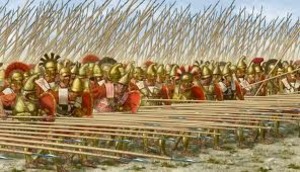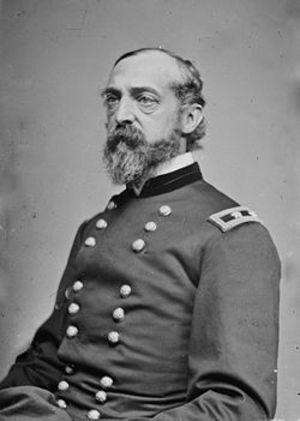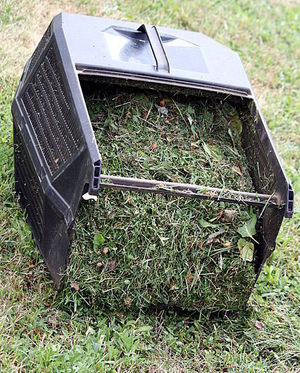Hoplites,or the backbone of the Greek army during the classical period were both feared and effective in equal measure. The most infamous of all Greek warriors were the Spartans, who, just like all other Greek infantry at the time, used the Phalanx formation. Spartans are often romanticized for running into battle half naked killing men by the hundreds.This how ever is extremely historically inaccurate. The Phalanx is a very tight formation of Greek heavy infantry that form a spear and shield wall. To understand the Phalanx one must understand what equipment was used.
In the classical era, Greek Heavy infantry, or hoplites were heavily armored spear men. Their spears would often reach 8-9ft with iron heads and bronze butts at the end of the spear so that if the head broke off there would be a second weapon. Their shields were around 3 feet in diameter and were wood bodies with a bronze layer covering it. The hoplites used a special shield that offered maximum power and control. A leather strap would hold the forearm in place while the left hand would grab a wooden grip. The shields weighed around 30 pounds and offered maximum protection as well as offensive ability due to the heavy bronze used.
A hoplite’s helmet was of Corinthian design, which was a Greek city-state overlooking a narrow passage connecting Northern and Southern Greece. More importantly it was in between the 2 major city states of the classical period, Athens, and Sparta. The helmet was forged of bronze and officers or politically important people had horse hair crests on the top of their helmets. Combat officers wore theirs side to side while normal warriors of high rank wore them front to back. Their helmets covered their entire face except their mouth,eyes and a small portion of their chin,these weighed about 12-15 pounds.
Their cuirasses or breastplates, were made of bronze. Greeks are known for creating art resembling the perfect man. This is evident in their breastplates, for muscular bodies are portrayed front and back including abs, navels,and pecs of godly perfection. This was also intimidating to the enemy and extremely effective. Along with shield,helmet, and breastplate,hoplites wore greaves to protect their shins/legs. The greaves were made of bronze once again and weighed about 3 pounds each.
Along with a spear, a hoplite had a short stabbing sword when the spear broke or was thrown. The blade was high carbon and was around 12-15 inches in length. Hoplites painted shields and wore capes as well. Under every piece of bronze armor was a leather layer for comfort. Now one can envision what a hoplite looks like, the phalanx makes more sense. Imagine a row of heavily armored warriors in armor glistening from the sun tightly packed 150 men wide and 8-16 men deep spears extended shields interlocking and waiting for you to charge into them and be massacred.
This was the main idea behind the phalanx. Arrows could not do damage due to their heavy armor and interlocking shields and warriors could not get close due to a row of spears extending 3-5 feet. They would literally have to run into the spear wall to even get close, then the warriors deeper in formation used their spears while the guys in front kept them away with their giant shields. It literally was a massacre for anyone going straight against a phalanx.
Although the phalanx was highly immobile, it proved devastating in enclosed or narrow passages such as that of Thermopylae where the battle field was only a few hundred meters wide. This allowed the Spartan to use their numbers to full advantage. The Persians could only fight 100 or so Spartans at a time and wouldn’t get far. One on one, no warrior on Earth could compare to the Spartan. When interlocked with more Spartans, the only thing stopping them was aching sword/spear arms.
All other Greek fighting forces used the same formation until the Romans finally outmaneuvered the Greeks and conquered them in 146 BC. A major downside to the Greek Phalanx was its immobility which proved to be the final nail in the Greek coffin when fighting the very mobile Roman army in Macedonia in the 100’s BC. Alexander used this formation as well only having much longer spears and integrating Eastern mercenaries for support.
It is difficult to trace the origins of the phalanx precisely but it is commonly known the phalanx originated in Southern Greece around 600-700BC. It was adopted very quickly and almost all Greek warriors were uniform after that.
Overall, the Greek phalanx in my mind was the greatest ancient fighting formation ever devised when applied properly as history has shown. Alexander conquered the world using it and 300 men held off half a million using it. How ever when the Greeks conquered the East,man power was spread thin and made them weak which in turn led to their demise at the hands of the Romans.





